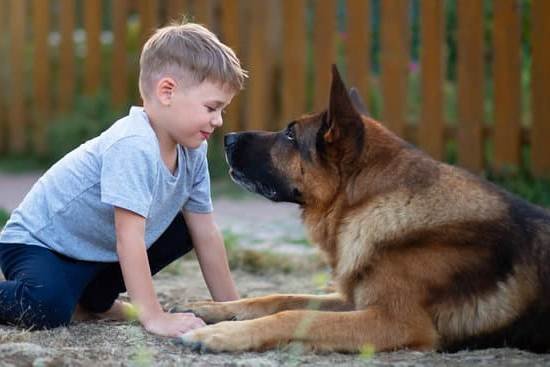Training a therapy dog involves more than just teaching your canine companion to perform tricks. Therapy dogs play a crucial role in providing comfort and support to individuals in various settings, such as hospitals, nursing homes, schools, and disaster areas. In this section, we will explore the importance of therapy dogs and the specific functions they serve in their communities.
Therapy dogs are specially trained to provide affection and comfort to people in need, offering emotional support that can have a profound impact on those they interact with. Whether it’s helping patients relax during medical procedures or providing companionship for individuals in long-term care facilities, therapy dogs contribute to the well-being of their human counterparts.
As we delve into the world of therapy dog training, we will also examine the benefits of this specialized form of canine education. From the positive effects on mental health to the improvement of social skills, the training process not only enhances a dog’s abilities but also fosters a deeper bond between the handler and their furry partner.
We will discuss how training a therapy dog is not only beneficial for those they serve but also for the handler themselves.
The Benefits of Training a Therapy Dog
One of the key benefits of training a therapy dog is the positive effect it has on the mental and emotional well-being of individuals. Interacting with a therapy dog has been shown to reduce stress, anxiety, and feelings of loneliness. For example, in hospital settings, patients who spend time with therapy dogs often experience lower blood pressure and heart rates.
In schools, therapy dogs can help children feel more at ease and open up about their feelings. These benefits not only extend to the individuals being visited by therapy dogs but also to their families and healthcare providers.
Furthermore, training a therapy dog provides an opportunity for both the handler and the dog to engage in meaningful community service. By participating in various visitation programs and outreach activities, therapy dogs and their handlers make a positive contribution to society while strengthening their bond. This sense of purpose can be incredibly fulfilling for both human and canine alike.
According to Therapy Dogs International (TDI), “a successful visit will elicit joy, laughter or at least a subtle yet profound improvement in mood.” The ability of trained therapy dogs to bring about these positive changes emphasizes just how valuable their role is in enhancing the well-being of others.
| Benefit | Example |
|---|---|
| Raising spirits | Therapy dogs reduce stress levels in hospital patients |
| Community service | Therapy dogs contribute positively to society through visitation programs |
| Mental health support | Interacting with therapy dogs can alleviate anxiety and loneliness |
Choosing the Right Dog for Therapy Training
When it comes to training a therapy dog, choosing the right breed and individual dog is crucial for success in their role. While any breed can potentially become a therapy dog, some are better suited due to their temperament, behavior, and personality traits. Generally, therapy dogs should be friendly, calm, patient, and enjoy human interaction. Breeds such as Labrador Retrievers, Golden Retrievers, Poodles, and Beagles are known for their sociable nature and make excellent choices for therapy work.
It’s important to assess the individual dog’s personality and behavior before starting formal training for therapy work. Consider factors such as their level of sociability with strangers, tolerance towards loud noises or sudden movements, and ability to remain calm in various environments.
Conducting temperament tests with professional trainers or organizations can help determine if a dog has the potential to become a successful therapy dog. Additionally, evaluating a dog’s health and physical condition is essential to ensure they can handle the demands of therapy work.
Once a suitable candidate is chosen for therapy training, it’s vital to provide them with proper socialization experiences from an early age. Exposure to different people, animals, environments, sounds, and stimuli will help develop their confidence and adaptability – both essential qualities for a successful therapy dog. Positive reinforcement training methods should also be used to reinforce good behavior and obedience while avoiding punishment-based techniques that could negatively impact a dog’s well-being.
| Therapy Dog Breed | Temperament/Traits |
|---|---|
| Labrador Retriever | Friendly, outgoing |
| Golden Retriever | Gentle, tolerant |
| Poodle | Intelligent, trainable |
| Beagle | Sociable, curious |
Basic Obedience Training for Therapy Dogs
Basic obedience training is the foundation for preparing a dog to become a certified therapy dog. This type of training teaches the dog essential commands such as sit, stay, down, come, and walking politely on a leash. These commands are crucial for therapy dogs as they need to be well-behaved and responsive to their handler’s cues in various environments.
During basic obedience training, it is important for handlers to use positive reinforcement techniques such as treats, verbal praise, and physical affection to encourage good behavior. Consistency and patience are also key when teaching these commands to therapy dogs. Handlers should dedicate regular time for training sessions and create a positive and stress-free environment for their dogs to learn.
In addition to following basic commands, therapy dogs must also learn proper manners and behavior around people. This includes not jumping on individuals or exhibiting any signs of aggression or fear. Basic obedience training helps therapy dogs become well-mannered and adaptable companions in different settings where they will be providing comfort and support to others.
Advanced Training Techniques for Therapy Dogs
When it comes to training a therapy dog, advanced techniques go beyond basic obedience and focus on specialized skills that are essential for their role in providing comfort and support to individuals in need. Here are some advanced training techniques that can help therapy dogs excel in their important work:
- Desensitization exercises: Therapy dogs often encounter various environments, noises, and situations. Advanced desensitization exercises can help them remain calm and composed in noisy or crowded settings, making them better equipped to provide comfort in hospitals, schools, nursing homes, and other facilities.
- Medical alert training: Some therapy dogs are trained to recognize and respond to specific medical conditions in individuals, such as detecting changes in blood sugar levels or providing support to individuals with PTSD during anxiety attacks. Advanced medical alert training requires the dog to learn specific cues and behaviors tailored to the individual’s needs.
- Task-specific skills: Depending on the setting in which they work, therapy dogs may need to learn task-specific skills such as retrieving items, turning light switches on or off, or providing physical support by leaning against an individual. These advanced skills can enhance the therapeutic impact of the dog’s interactions.
Incorporating these advanced training techniques into a therapy dog’s regimen can elevate their ability to provide emotional support and assistance effectively. It is important to remember that training a therapy dog is an ongoing process that requires patience, consistency, and dedication from the handler.
Moreover, it is crucial for handlers of therapy dogs to seek guidance from experienced trainers or behaviorists who specialize in therapy dog work. Obtaining professional assistance can ensure that the advanced training techniques are implemented correctly and tailored to the specific needs of both the dog and the individuals they will be interacting with. This additional support can contribute significantly to the success of a therapy dog in their role.
Handling and Socialization for Therapy Dogs
When training a therapy dog, it is important to focus on proper handling and socialization to ensure that the dog can effectively interact with various individuals in different environments. Here are some key guidelines for handling and socializing a therapy dog:
- Positive Reinforcement: Use positive reinforcement techniques to guide your therapy dog’s behavior. Reward good behavior with treats, praise, or toys to encourage socialization and interaction with others.
- Exposure to Different Environments: Expose your therapy dog to various environments, including hospitals, nursing homes, schools, and public spaces. This will help them become familiar with different settings and people.
- Proper Greeting Etiquette: Train your therapy dog to greet people politely by not jumping up or being overly exuberant. Teaching them to calmly approach and interact with individuals is crucial for successful therapy visits.
Additionally, it is essential for handlers of therapy dogs to understand how to effectively manage their dog’s interactions with others. This includes recognizing signs of stress or discomfort in their dog and knowing when to intervene or remove them from a situation. Handlers should also be mindful of their own behavior and body language as it can greatly influence the demeanor of their therapy dog.
Overall, providing proper handling and socialization for a therapy dog is essential in preparing them for their important role in providing comfort and support to those in need within the community.
Lastly, it is important for both handlers and their dogs to practice self-care. Maintaining a strong bond through regular grooming, exercise routines, healthy diets, as well as plenty of rest keeps the duo ready for continuous impactful work within the community.
Therapy Dog Certification and Registration Process
The process of certifying and registering a therapy dog is an important step in making sure that the dog is prepared to provide comfort and support to individuals in need. Therapy dog certification and registration typically involves a series of evaluations and tests to ensure that the dog has the right temperament and behavior to excel in this role.
One of the first steps in the certification process is ensuring that the therapy dog candidate has completed basic obedience training. This includes commands such as sit, stay, come, and walking on a loose leash. These skills are essential for a therapy dog to be well-behaved and under control in various environments.
Once the basic obedience training is complete, the next step is often a test of the dog’s temperament and behavior. This may involve exposing the dog to different stimuli, interactions with unfamiliar people, and being able to remain calm in various situations. The purpose of these evaluations is to assess how well-suited the dog is for interacting with different individuals in a therapeutic setting.
In addition to passing these evaluations, therapy dogs also need to be registered with recognized organizations in order to be officially recognized as therapy dogs. This registration process typically involves submitting documentation of the dog’s training, health records, and completing any necessary paperwork or fees.
Overall, undergoing the certification and registration process for a therapy dog ensures that they are well-prepared and qualified to provide comfort and support in various settings such as hospitals, nursing homes, schools, or disaster areas. It also demonstrates a commitment by their handlers to maintain high standards for their pet’s behavior and well-being while serving others.
The Impact of a Therapy Dog in the Community
Therapy dogs play a vital role in the community, offering comfort and support to individuals in various settings. Their presence can have a profound impact on the emotional and mental well-being of those they interact with, making them valuable assets in healthcare facilities, schools, and other organizations.
Benefits to Individuals
The presence of therapy dogs in the community can provide numerous benefits to individuals. Interacting with a therapy dog has been shown to reduce stress, anxiety, and feelings of loneliness. It can also increase socialization and communication among individuals who may be struggling with these issues. In healthcare settings, therapy dogs have been known to lower blood pressure and heart rate in patients, as well as reduce the perception of pain during medical procedures.
Benefits to the Community
Not only do therapy dogs provide support at an individual level, but they also have positive effects on the community as a whole. Their presence can create a more welcoming and calming atmosphere in various environments such as hospitals, nursing homes, and schools. Additionally, therapy dog programs often provide opportunities for volunteer work, allowing members of the community to contribute to the well-being of others.
Education and Awareness
The impact of therapy dogs in the community goes beyond immediate emotional support; it also raises awareness about mental health and the benefits of animal-assisted interventions. Through their interactions with therapy dogs, individuals in the community can learn more about the role of these animals in providing comfort and healing. This education can lead to greater acceptance and understanding of mental health challenges and alternative forms of therapy.
Overall, the impact of a therapy dog in the community is significant. Through their presence and interactions with individuals, these specially trained animals contribute to creating a more compassionate and supportive environment for all members of society.
Maintaining the Well-Being of a Therapy Dog
Once a dog has completed the necessary training and has become a certified therapy dog, it is essential to focus on maintaining their well-being. This includes physical health, mental well-being, and overall happiness. Regular check-ups with a veterinarian are crucial to ensure that the therapy dog is in good health and able to continue their role in providing comfort and support to those in need.
In addition to physical health, it’s important to consider the mental well-being of a therapy dog. These animals are exposed to different environments and situations as part of their work, so it’s important for handlers to monitor their behavior and emotional state. Providing a safe and comfortable environment at home is essential for the well-being of a therapy dog.
Moreover, regular exercise, mental stimulation, and social interactions are vital for maintaining the well-being of a therapy dog. Daily walks, playtime, and engagement with other dogs can contribute to their overall happiness and fulfillment. Furthermore, ongoing training sessions can help keep the therapy dog’s skills sharp and provide them with mental stimulation.
Ultimately, maintaining the well-being of a therapy dog requires commitment from the handler or owner. It’s important to prioritize their health and happiness while also ensuring that they have opportunities for rest and relaxation when not working as a therapy animal. By taking proactive steps to maintain their well-being, therapy dogs can continue making a positive impact in the community for years to come.
Resources for Further Training and Support for Therapy Dog Handlers
In conclusion, training a therapy dog is not only beneficial for the individuals and communities that they serve, but also for the well-being of the dog themselves. By understanding the important role that therapy dogs play in providing comfort, support, and companionship to those in need, handlers can appreciate the impact that their trained dogs can have on others’ lives.
The benefits of training a therapy dog go beyond just the immediate support they provide; it also allows dogs to develop their socialization skills and obedience, enhancing their overall well-being.
When choosing the right dog for therapy training, it is crucial to consider their temperament, behavior, and ability to handle various environments and situations. Basic obedience training lays the foundation for a successful therapy dog, while advanced techniques further enhance their ability to provide comfort and support in different settings. The certification and registration process ensures that therapy dogs meet certain standards and are capable of positively impacting the community.
Handler education and training resources are essential in maintaining the well-being of a therapy dog. Proper handling techniques, socialization opportunities, and ongoing support for handlers contribute to the success of therapy dog teams. It is important to take advantage of available resources for further education and guidance as a therapy dog handler. These resources not only benefit the handler but also contribute to creating a positive experience for both the therapy dog and those they serve.
Frequently Asked Questions
How Long Does It Take to Train a Dog to Be a Therapy Dog?
The time it takes to train a dog to be a therapy dog varies depending on the dog’s temperament and the training program. Generally, it can take anywhere from 6 months to 2 years for a dog to become a certified therapy dog.
Is It Hard to Train a Therapy Dog?
Training a therapy dog requires dedication, patience, and consistency. It can be challenging as it involves teaching the dog to be calm, obedient, and sociable in various environments. However, with the right training approach, many dogs can successfully become therapy dogs.
Do Therapy Dogs Have to Be AKC Registered?
Therapy dogs do not have to be AKC registered to work as therapy dogs. While being registered with organizations like the American Kennel Club (AKC) can provide some benefits, such as access to certain facilities and events, it is not a requirement for a dog to become a therapy dog.
The most important thing is for the dog to pass the required temperament tests and training programs.

Welcome to the blog! I am a professional dog trainer and have been working with dogs for many years. In this blog, I will be discussing various topics related to dog training, including tips, tricks, and advice. I hope you find this information helpful and informative. Thanks for reading!





